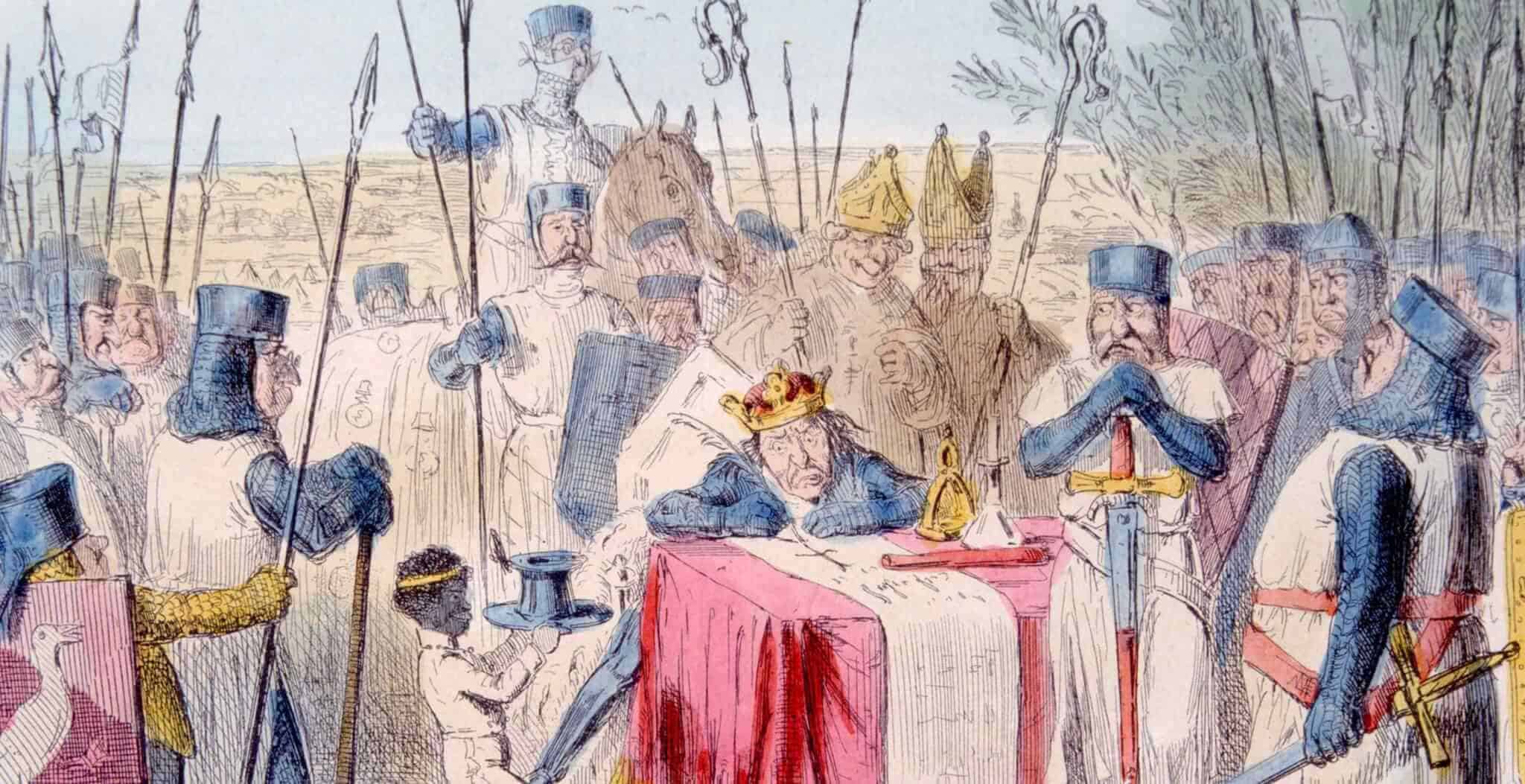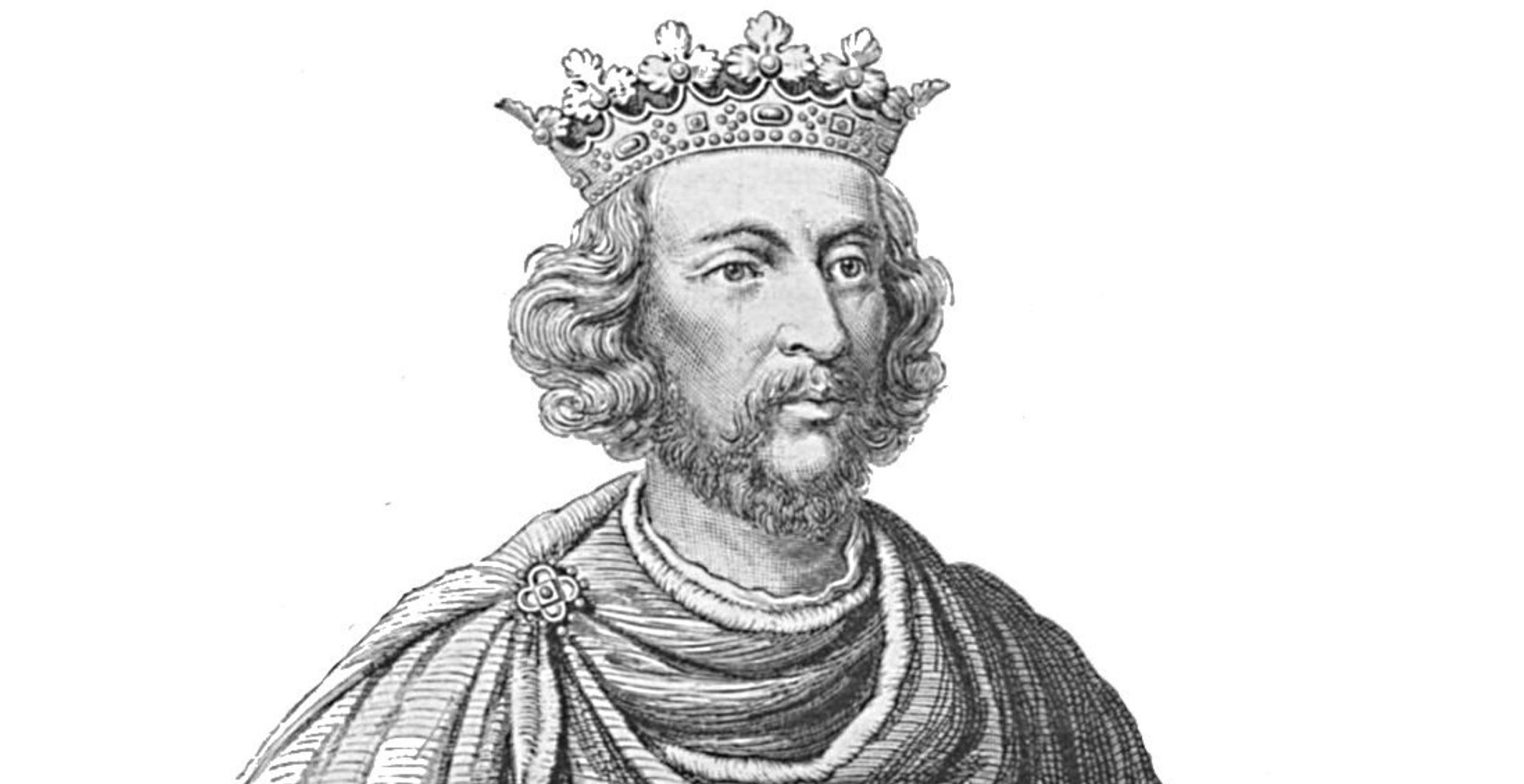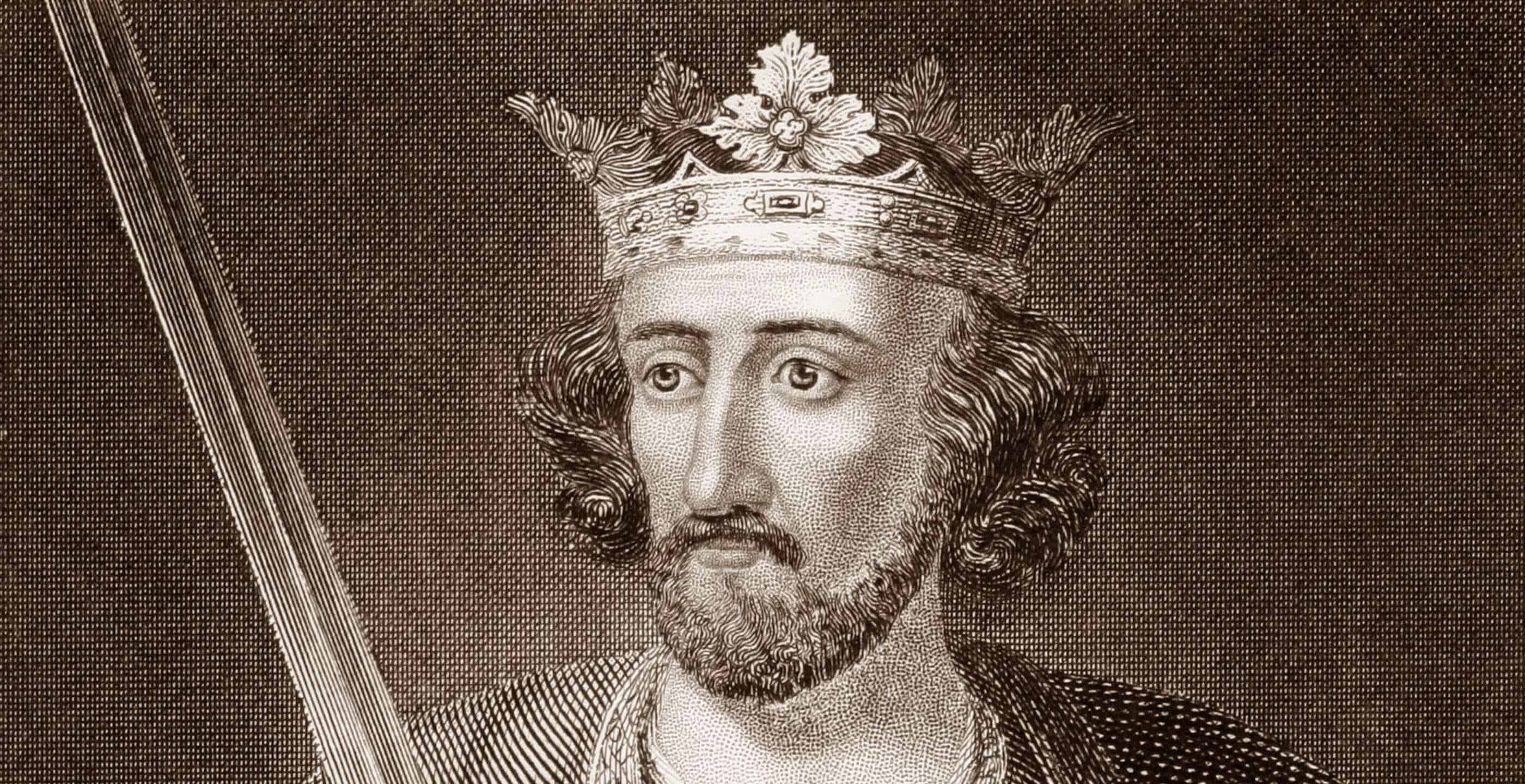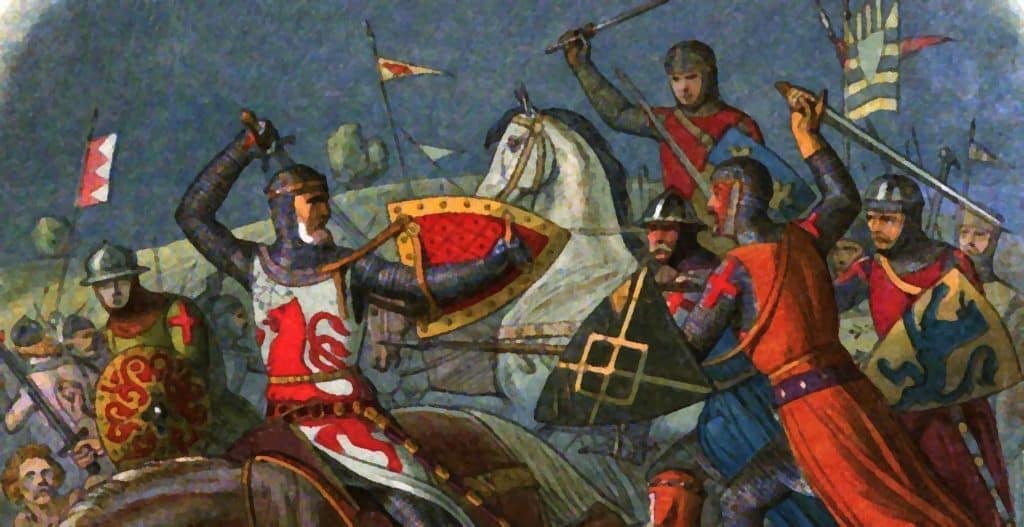The Battle of Lewis was fought on 14th May 1264, between the forces of a number of rebel Barons led by Simon de Montfort, Earl of Leicester, and the army of King Henry III, on the downs to the north-west of the town of Lewes.
De Montfort’s army had marched from their camp at Fletching to take up position on Offam Hill, whilst Henry had left the relative safety of Lewes Castle to engage the Barons in battle.
Henry’s forces initially enjoyed some limited success when his son, Prince Edward (later King Edward I) routed part of the Baronial army with a cavalry charge. In doing so however, he may have also cost the day, as in the pursuit of his quarry he not only left the battlefield, but Henry’s flank exposed.
The royal infantry suffered significant casualties as the only option now left to them was to attack the Baronial army on top of the hill.
The overwhelmed Royalists were forced into a fighting retreat all the way back to Lewes Castle. King Henry and Prince Edward were held by de Montfort who governed in their name, the “uncrowned King of England”.
Edward eventually escaped; and after raising yet another army, would meet de Montfort again at the Battle of Evesham to settle the issue once and for all.
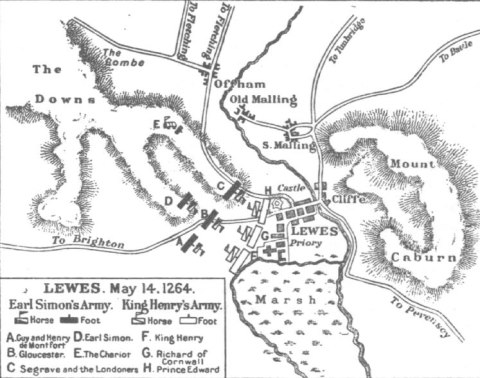
Key Facts:
Date: 14th May, 1264
War: Second Barons’ War
Location: Lewes, Sussex
Belligerents: Royalists, Barons
Victors: Barons
Numbers: Royalists around 10,000, Barons around 5,000
Casualties: Unknown
Commanders: King Henry III (Royalists), Simon de Montfort (Barons)



